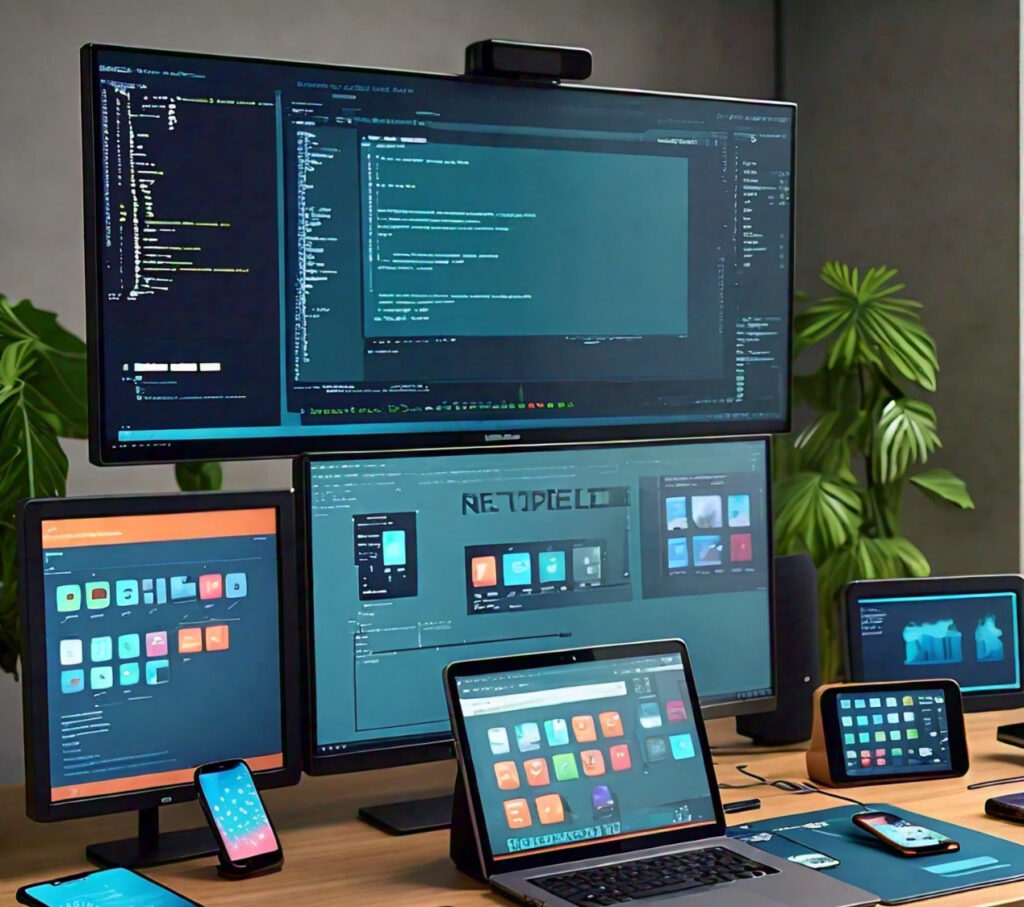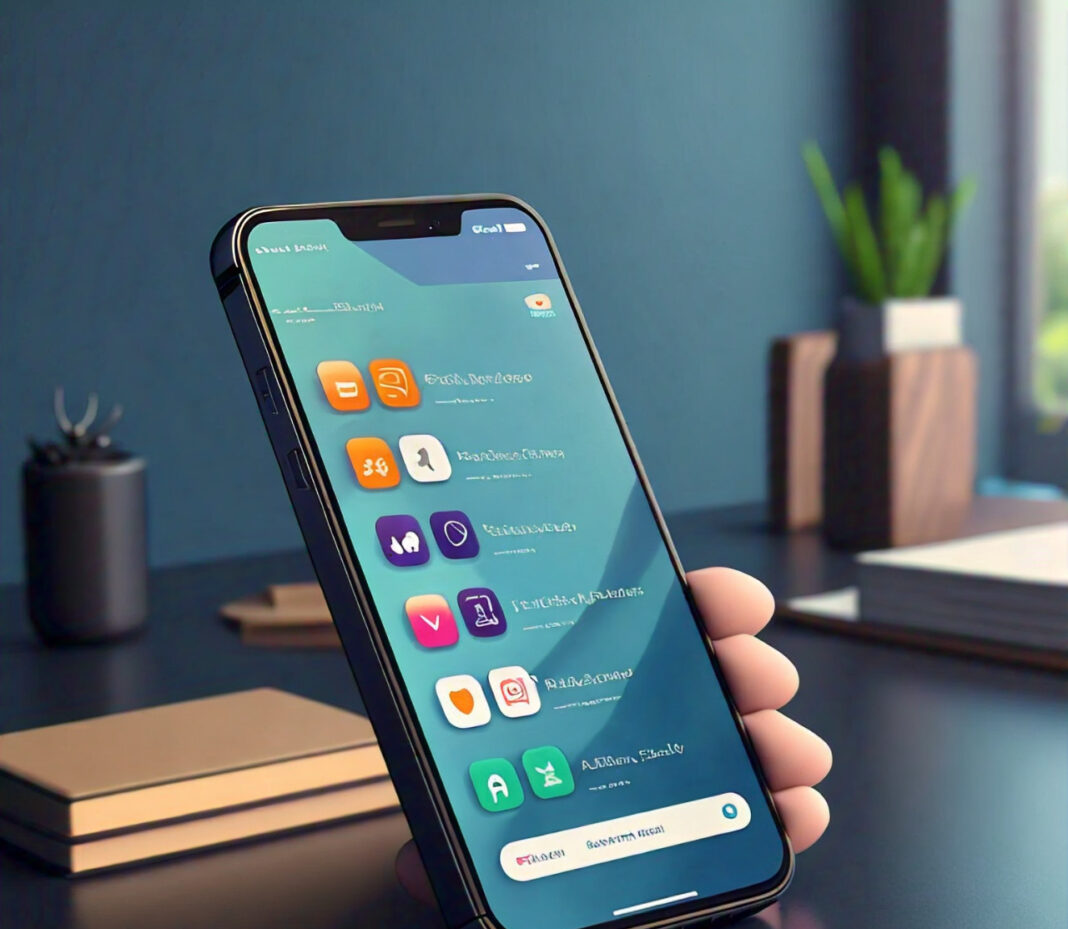With mobile apps turning up on our devices, it seems true that everything, from social networking and shopping to banking and entertainment, has a dedicated app for it. This demand has caused a great boom in the app development industry. However, in these plentiful options, you will perhaps ask yourself: what is the most popular app development platform

This paper reviews some of the top contenders in the app development world by looking at their features, pros and cons, and why they have managed to be popular among developers. We’ll consider both cross-platform and native development options, looking at things like ease of use, performance, and market share in view. By the end of it, you’ll have a good sense of the present landscape of app development platforms.
Rise of Mobile App Development
But proceeding ahead of the specifics of the platform, let us keep in mind that the industry for app development has skyrocketed to growth:
1.1 Mobile App Market Statistics
The mobile app market has soared over the decade. As of 2021, global revenues reached $693 billion from mobile apps and are estimated to be above $935 billion by 2023. With over 3.5 billion smartphone users globally, the demand for innovative and user-friendly apps continues to grow.
1.2 Networks of App Development Platforms
App development platforms typically fall into two networks:
a. Native apps: The native apps are platform-specific, either iOS or Android.
b. Cross-platform app development frameworks: This enables apps to be developed so that they can work on multiple operating systems in a common code.
We will now look at the top app development platforms in each network.
2.1 Native App Development Platforms
2.1 Android Studio

Android Studio is an Integrated Development Environment (IDE) officially for Android app development. Released by Google in 2013, Android Studio has become the most popular IDE among developers of Android apps.
Key features:
- Intelligent code editor
- Fast emulator
- Flexible build system
- Real-time profilers
Pros:
- Very comprehensive development tools
- Direct support from Google
- Large community and resources online
Cons:
- The steep learning curve for new developers
- Sometimes resource-hungry
2.2 Xcode
Xcode is the integrated development environment created by Apple for building applications on iOS, macOS, watchOS, and tvOS. It is the main software used to create native applications for Apple devices.
Key features:
- Interface Builder for UI design
- Supports Swift and Objective-C
- Comes with integrated Apple development tools
- Contains a testing simulator
Pros:
- Native integration with the Apple ecosystem
- Offers good debugging tools
- Constant updates and support from Apple
Cons:
- Works only on macOS
- Might be complicated for beginners

- Cross-Platform Development Frameworks
3.1 React Native
Developed by Facebook, React Native has gained immense popularity to build native apps for both iOS and Android using just one language, JavaScript, as the base language, and get the added advantage of React by building bridges.
Key features:
- Hot reloading for fast development
- Large library of pre-built components
- Native modules for platform-specific code
Pros:
- Write once, run anywhere approach
- Big and active community
- Familiar for web developers
Cons:
- It lags behind the performance of fully native apps.
- Sometimes works poorly with native APIs.
3.2 Flutter
Flutter, developed by Google, is one new entrant that, within a very short period, has increased its pace in cross-platform development. Major features: • Hot reload to view the changes as a service. • Pre-built widgets for UI • Custom rendering engine Pros • Fast Development • High Performance • Beautiful, fully customizable UI • Fast-growing community and resources Cons • App size is larger than native apps • Still in the maturation stage; many features are under development. 4. Hybrid App Development Platforms 4.1 Ionic
Ionic is a framework for the development of hybrid mobile apps using only web technologies such as HTML, CSS, and JavaScript.
Key features:
Cordova and Angular-based
Pre-built UI components
Native device features
Pros:
Easy to learn for web developers
Cross-platform development
Big community and plugin ecosystem
Cons:
Performance may never be at a level with native applications.
Some device-specific features are hardly accessible.
4.2 PhoneGap(Apache Cordova)
The second popular hybrid app development framework using web technologies is PhoneGap, now known as Apache Cordova.
Key features:
- Writing apps with HTML, CSS, and JavaScript
- Device APIs are accessible
- Huge library of plugins
Pros:
- Single codebase for several platforms
- Familiar technologies for web developers
- Large community support
Cons:
- Slower than native apps
- Missing some platform-specific features
- Low-Code and No-Code Platforms
5.1 OutSystems
OutSystems is a low-code platform for fast and easy application development, including mobile apps.
A few of its key features are the visual development environment, pre-built templates and UI patterns, and integration with existing systems.
Pros: Faster development time, ease of use by citizen developers as well as professionals, enterprise-grade security, and scalability.
Cons: Very pricey for small businesses. Though it ensures that whatever you develop can be accessed with ease, it is mostly at the expense of traditional coding customizability.
5.2 Appery.io
Appery.io is yet another cloud-based, no-code app development platform.
Some of the key features include drag-and-drop, a visual development interface, pre-built templates and UI patterns, and integration with existing systems.
Pros:
- No need for programming
- Quick prototyping and development
- Cloud-based, on the go from everywhere
Cons:
- Not for sophisticated app-making
- You are locked in with the platform
- Popularity Metrics
To finalize which development platform is the most popular among the rest of them, we need to take into consideration the following popularity metrics:
6.1 Market Share
Following the above-discussed surveys:
- For native development, the leaders are Android Studio and Xcode, respectively, where Android-based apps have stronger positions worldwide.
- Cross-platform development: Virtually equal competitors are Flutter and React Native. Slightly, React Native is taking the lead because it entered the market earlier.
- Other hybrid frameworks such as Ionic, and PhoneGap have a smaller market share but are still relevantly important.
6.2 Developer Preference
According to.2021 Developer Survey of StackOverflow, developers liked the Cross-platform tools like this:
- The most loved tool for the developers was React Native, and almost at par with it was Flutter.
- Native development tools like Android Studio and Xcode continue to be prevalent because of their feature-studded nature and high performance.
6.3 Job Market Demand
From the analysis of the leading job posting platforms, it can be said that :
- Native iOS and Android developers have high demand.
- React Native and Flutter developers have rising demand.
- Hybrid app developers have stable demand.
- Factors Affecting Popularity
Various factors are at play for the popularity of any app development platform:
7.1 Ease of Use
The gentler learning curves and more intuitive user interfaces attract more developers, particularly novices.
7.2 Performance
The ability to create high-performance applications is an exceptionally important feature. More often, native platforms have an advantage in this area, but cross-platform frameworks are trying to close the gap.
7.3 Community and Support
The large, active community translates into more resources, third-party libraries, and vibrant problem-solving support for the developer.
7.4 Corporate Backing
Major platforms, such as Google (Android Studio, Flutter), and Facebook (React Native), are generally popular because of the continuous addition of features and updates and because they work well with almost all tools.
7.5 Cost and Time Efficiency
There is a rise in favor of cross-development and low-code platforms due to their supportive functionality in reducing development time and probably, in a perspective way, the cost.
- Most Widely Used Platform for App Development
While it’s not easy to confer absolute leadership on one platform, we can easily pick out leaders in the following categories:
8.1 Native Development
In the field of native development, the most popular platforms include Android Studio and Xcode. Android Studio slightly leads due to Android’s larger global market share.
8.2 Cross-Platform Development
In the cross-platform arena, React Native and Flutter are the leading technologies. Here, React Native is slightly at an advantage due to being available in the market for a longer period and having larger pre-existing code.
8.3 Hybrid Development
In hybrid development, the leading technology is Ionic. It has been tagged as the friendliest to work with and the most accommodating of web technologies.
8.4 Low-Code/No-Code Development
Appery.io targets small businesses and individual developers, while in the no-code/low-code environment, OutSystems specializes in the enterprise market.
- Future Trends on Platforms for App Development
Several upcoming approaches can be envisaged and will be the defining elements of the world of app development:
9.1 Infusion of AI and ML
Platforms that provide easy infusion zones with AI and ML have been observed to steadily rise in popularity with the increased availability of such technologies in mobile apps.
9.2 The Platforms for Connecting Applications will be In-sync with IoT
As IoT devices become more popular, platforms supporting the development of IoT apps will also be higher in adoption.
9.3 Augmented Reality (AR) and Virtual Reality (VR)
With growing interest in both AR and VR, platforms and frameworks that offer a high capability and development environment around both technologies are on the hunt to be adopted more by developers.
9.4 Progressive Web Apps (PWAs)
Similarly, as PWAs are becoming popular, the frameworks for developing these in native and web-based apps might be driven by the new interest in native development themselves.
The app development landscape is diverse and vibrant. Although native platforms like Android Studio and Xcode are still ruling because of performance and integration with their eco-systems, cross-platform frameworks like React Native and the latest introduction, Flutter, are rapidly moving toward domination in app development. They bring some attractive propositions: writing code only once and deploying it on different platforms, which saves time and resources.
A place does exist for both hybrid solutions and low-code platforms, solving varied requirements and skill levels in the development community. Very often, the “most popular” platform is decided by specific project needs, while developer experience and target audience are other significant factors to consider.
This could be expected over time, and with the pace of technological advancement, we should probably see much development around the app development platform to include new features. So, developers need to take their time to keep updated regarding these changes and then choose the best platform according to the project needs and the skill set of the developer.
After all, the most popular development platform for apps is where developers get to work on building efficient, high-performing apps that meet user needs. Whether that’s native app development, a cross-platform framework, or some kind of cool new technology, the aim remains the same: building value-adding apps that will make the overall user experience just that little bit better in our mobile-first world.






